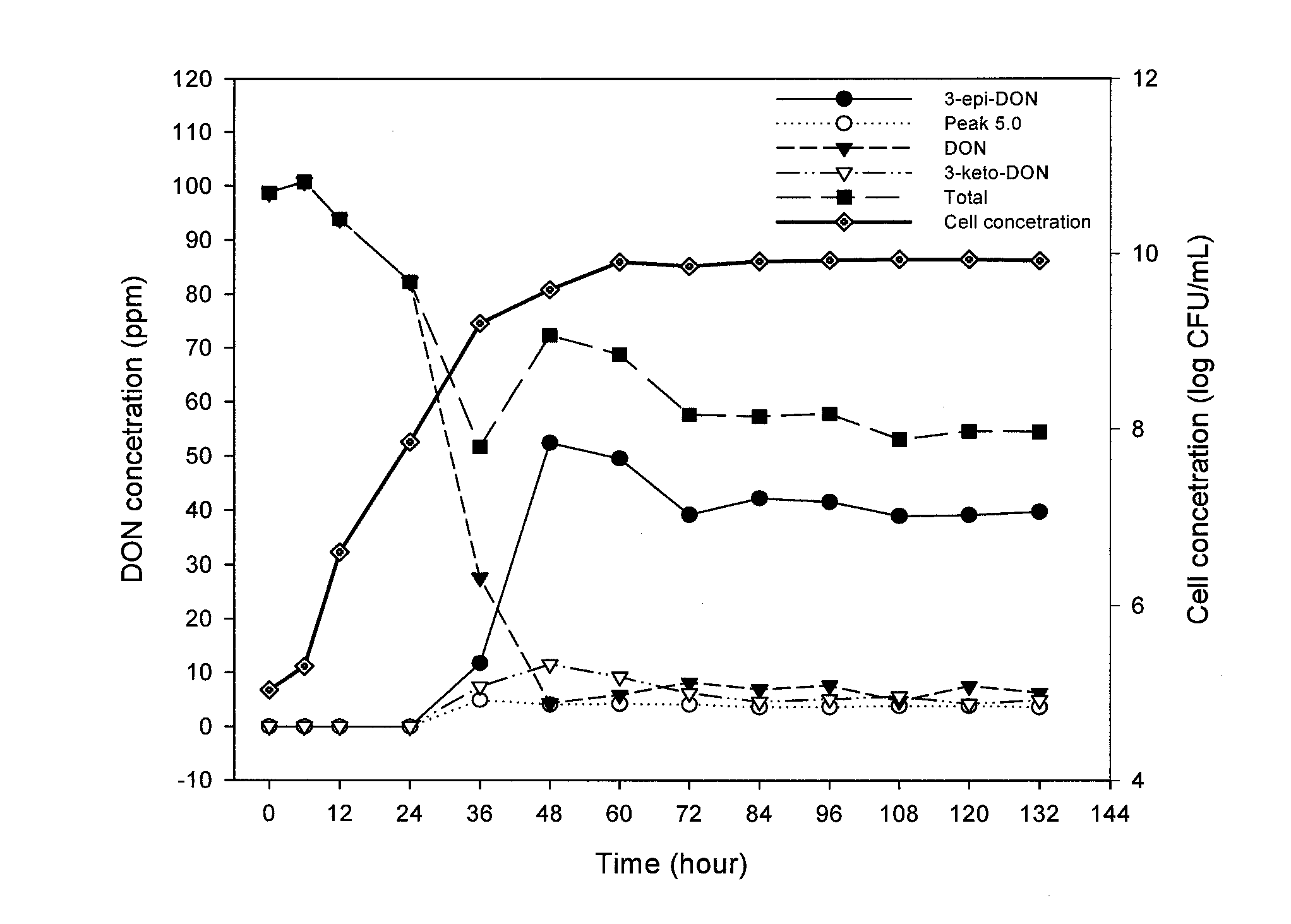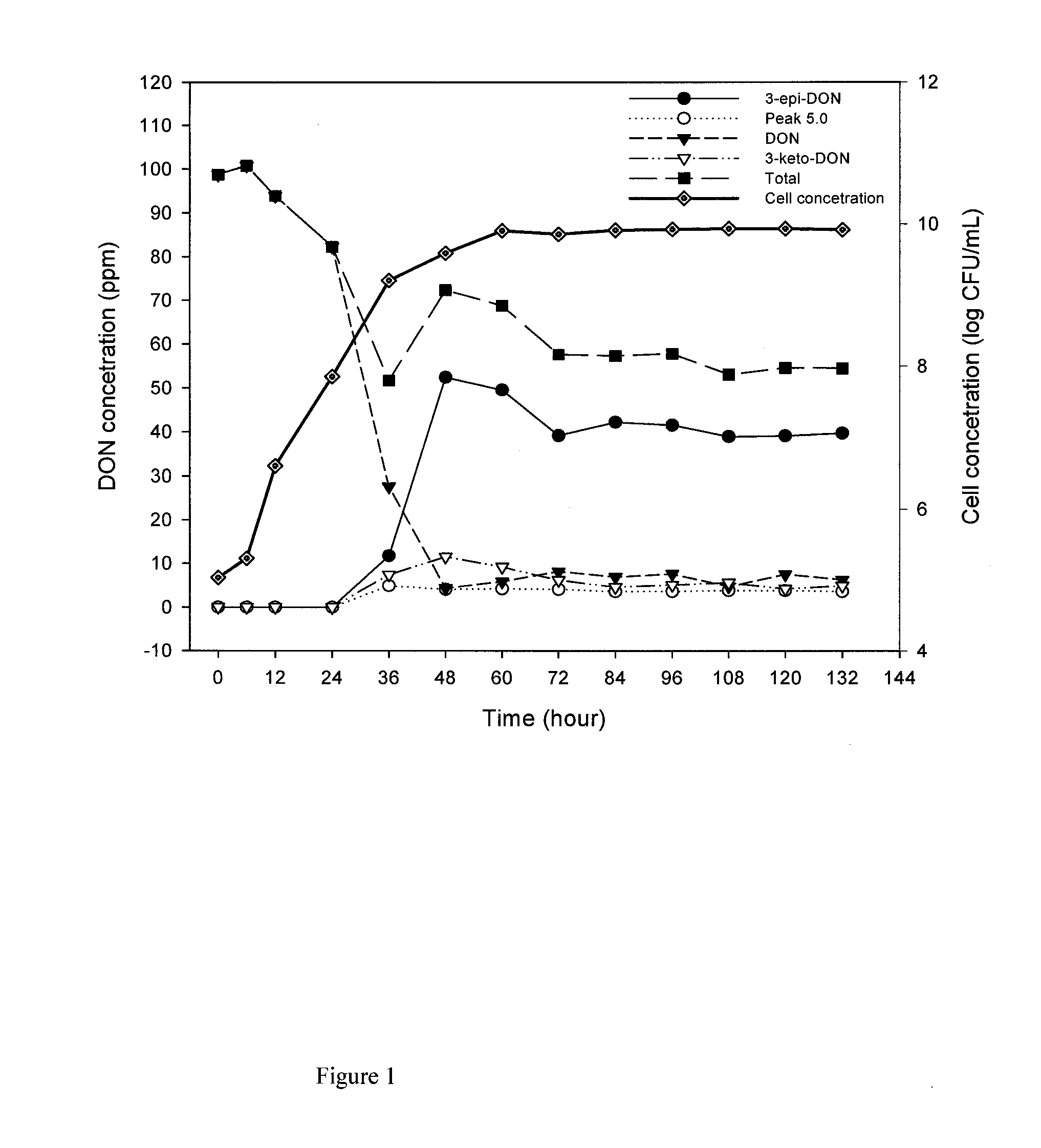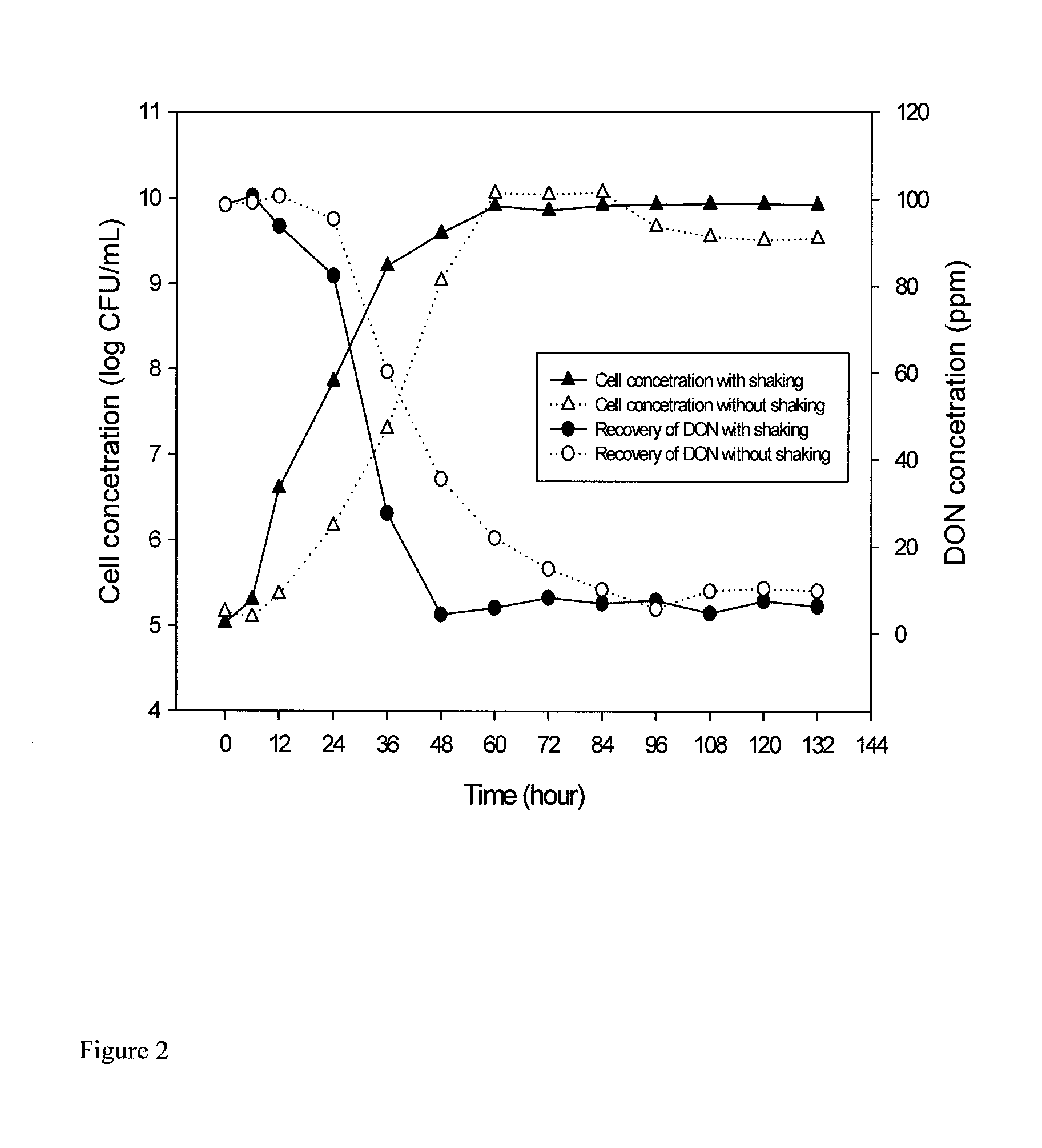Bacterial isolate, methods of isolating bacterial isolates and methods for detoxification of trichothecene mycotoxins
a technology of trichothecene mycotoxins and bacterial isolates, which is applied in the field of detoxification microorganisms, can solve the problems of serious threat to human health and food and livestock industries, global challenge in controlling mycotoxins, and mycotoxin contamination of feed ingredients also a serious threat to livestock industry, so as to prevent or reduce mycotoxin contamination
- Summary
- Abstract
- Description
- Claims
- Application Information
AI Technical Summary
Benefits of technology
Problems solved by technology
Method used
Image
Examples
example 1
[0069]Chemicals, Cultural Media, Microorganisms and Soils
[0070]Deoxynivalenol (DON or vomitoxin) standard, glucose, sucrose, dextrose, xylose, (NH4)2SO4, (NH4)2HPO4, K2HPO4, KH2PO4, MgSO4, K2SO4, FeSO4, MnSO4, carboxymethyl cellulose (CMC), NH4NO3.7H2O, Dulbecco's modified eagle medium (DMEM), fetal calf serum (FCS), penicillin, streptomycin, sodium pyruvate, phosphate buffered saline (PBS), trypsin, ethylenediamine tetraacetic acid (EDTA), thiazolyl blue tetrazolium bromide (MTT) and dimethyl sulfoxide (DMSO) were purchased from Sigma-Aldrich (Oakville, Canada). DON used in the biotransformation assays was purified from F. graminearum rice culture using high speed counter current chromatography (He et al., 2007). Standard 3-keto-DON and mouldy corn were obtained from the Eastern Cereal and Oilseed Research Centre, AAFC, Ottawa, ON, Canada. HPLC grade methanol was obtained from Caledon Labs, (Georgetown, Canada). DIFCO potato dextrose agar (PDA), DIFCO tryptic soy broth (TSB), DIFCO...
example 2
[0133]Toxicity of Transformation Products of DON in an Animal Model
[0134]Female B6C3FI mice were obtained from Charles River Canada Inc (Montreal, Canada). Mice were housed in pairs in plastic cages under conditions meeting the requirements of the Canadian Council for Animal Care and were acclimatized for one week before the start of the study. 2014 Teklad Global 14% Protein Rodent Maintenance Diet (Harlan Laboratories, Inc., Quebec, Canada) and water were provided ad libitum before and throughout the study.
[0135]The experiment included 10 mice per group for each of the following treatments: Control (solvent control, free of toxin); 2 mg / kg DON; 25 mg / kg 3-epi-DON, and 100 mg / kg 3-epi-DON. There were no significant differences in starting body weights for any of the groups studied (P>0.05). Each mouse received a single daily gavage dose with a 20-gauge stainless-steel gavage needles (Popper and Sons, Inc., New Hyde Park, N.Y., USA) for 14 consecutive days. Body weights were monitore...
example 3
[0138]Calibration Curve and Preparation of Inoculum
[0139]An initial calibration curve of 040408-1 was made using a dilution plating technique and turbidity measurements. Bacterial isolate 040408-1 from pure culture was grown on 1 ml of CMB on a rotary shaker at 28° C. for 24 h with shaking at 200 rpm. From this original suspension, serial two-fold dilutions were made and optical density (OD) readings performed at 620 nm for each resulting suspension using a Ultrospec 3100 Pro UV / Visible spectrophotometer (Biochrom Ltd., Cambridge, UK) until OD was approximately 0.10. Additionally, each new suspension was used to make a 10-fold dilution series up to 10−3, from which 100 μL of supernatant was inoculated and spread onto corn meal agar plates. The plates were incubated in the dark at 28° C. for 3 days and the number of forming colonies units per millilitre (CFU mL−1) was determined by plate counting and the number of CFU for each two fold-dilution was extrapolated. The calibration curve...
PUM
| Property | Measurement | Unit |
|---|---|---|
| temperature | aaaaa | aaaaa |
| pH | aaaaa | aaaaa |
| temperature | aaaaa | aaaaa |
Abstract
Description
Claims
Application Information
 Login to View More
Login to View More - R&D
- Intellectual Property
- Life Sciences
- Materials
- Tech Scout
- Unparalleled Data Quality
- Higher Quality Content
- 60% Fewer Hallucinations
Browse by: Latest US Patents, China's latest patents, Technical Efficacy Thesaurus, Application Domain, Technology Topic, Popular Technical Reports.
© 2025 PatSnap. All rights reserved.Legal|Privacy policy|Modern Slavery Act Transparency Statement|Sitemap|About US| Contact US: help@patsnap.com



